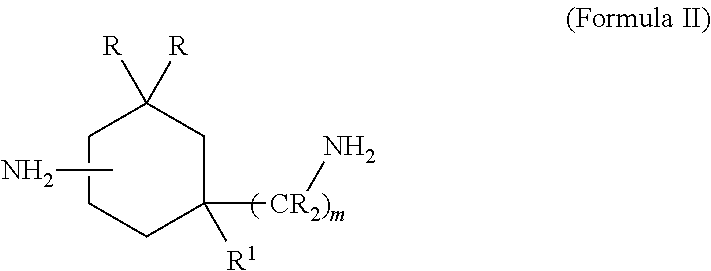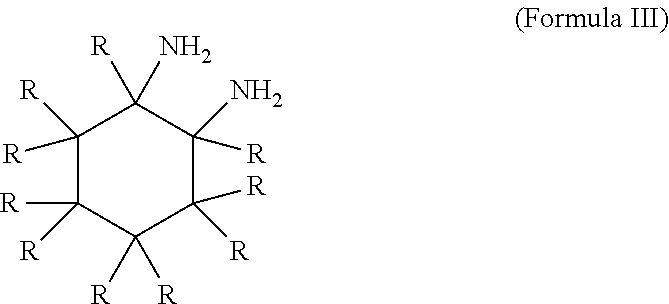Non-aromatic based antioxidants for lubricants
- Summary
- Abstract
- Description
- Claims
- Application Information
AI Technical Summary
Benefits of technology
Problems solved by technology
Method used
Image
Examples
examples
[0030]The materials used in the Examples and Comparative Examples and obtained commercially include:[0031]TOTAL™ 150 S.N. (Solvent Neutral): A Group I paraffinic solvent neutral base oil available from Total Corporation and having a typical kinematic viscosity of 30 square millimeters per second (mm2 / sec) at 40° C.[0032]SYNALOX™ 100-30B: A butanol-initiated propoxylate having a typical kinematic viscosity of 46 mm2 / sec at 40° C., available from The Dow Chemical Company.[0033]NYNAS™ T22: A naphthenic base oil from Nynas Corporation, having a typical kinematic viscosity of 22 mm2 / sec at 40° C. and a density at 15° C. of 0.90 grams per milliliter (g / mL). It has a naphthenic content of 42 wt %; an aromatic content of 11 wt %; and a paraffinic content of 47 wt %.[0034]NEXBASE™ 2004: A polyalphaolefin base oil from Neste having a typical kinematic viscosity of 4 mm2 / sec at 100° C.[0035]UCON™ OSP-46: A dodecanol-initiated propylene oxide / butylene oxide (PO / BO) (50 / 50 weight / weight, ww), av...
PUM
| Property | Measurement | Unit |
|---|---|---|
| weight percent | aaaaa | aaaaa |
| wt % | aaaaa | aaaaa |
| temperature | aaaaa | aaaaa |
Abstract
Description
Claims
Application Information
 Login to View More
Login to View More - R&D
- Intellectual Property
- Life Sciences
- Materials
- Tech Scout
- Unparalleled Data Quality
- Higher Quality Content
- 60% Fewer Hallucinations
Browse by: Latest US Patents, China's latest patents, Technical Efficacy Thesaurus, Application Domain, Technology Topic, Popular Technical Reports.
© 2025 PatSnap. All rights reserved.Legal|Privacy policy|Modern Slavery Act Transparency Statement|Sitemap|About US| Contact US: help@patsnap.com



